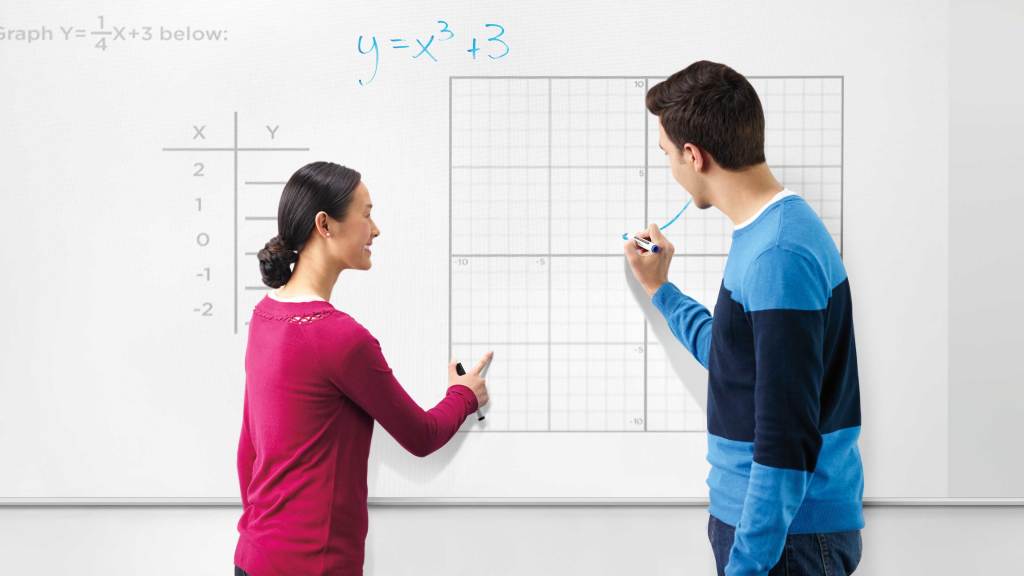WRITING + WHITEBOARD: MORE RELEVANT THAN EVER
It’s the golden age for content display, with hi-def cameras and monitors, and touchscreen digital devices of every size. So why are traditional dry-erase whiteboards in the classroom more popular than ever?
Besides being multitaskers—you can write or project on them, attach material with magnets—they also come in any size, don’t need power and they’re inexpensive. But what really makes whiteboards great learning tools is how they engage both the body and brain in the learning process.
Whiteboard work is both kinesthetic and visual. The act of writing and drawing engages the user physically and mentally, and that boosts learning. For example, research at Indiana University showed that neural activity in children was far more enhanced in kids who practiced writing by hand than in those who simply looked at letters.
University of Washington research demonstrated a special relationship between the hand and the brain when a person composes thoughts. Finger movements activate regions of the brain involved in thinking, language and working memory.
There are group benefits as well. Writing information and ideas on a whiteboard frees users from having to remember important information. Displaying information helps create shared group knowledge. Portable whiteboards make it easy for two or three users to jot down thoughts, draw correlations and build on each other’s ideas.
“Educators know the research, and they see the benefits of whiteboards every day. It’s not surprising we’ve seen growth with use of our products,” says Shawn Collins, director of new business development for Polyvision, the market leader in CeramicSteel whiteboard material.
Collins says schools are continually coming up with new ways to use whiteboards. Installing whiteboards in the classroom at different heights to accommodate different users is increasingly popular. A university recently ordered five-foot high whiteboards so they can be used while sitting or standing. Whiteboards that slide horizontally are used to reveal content in sequence or cover up a flat screen when it’s not in use. Personal-sized whiteboards work as privacy screens during test taking, presentation aids and as individual note taking tools.
With nothing to power up and no apps to open, a whiteboard is often the easiest, quickest way to seize a teachable moment, capture someone’s attention and engage students of any age.
Curious to learn more? See the full article at Steelcase!
